A car C of mass m1 rests on a plank P of mass m2. The plank rests on a smooth floor. The string and pulley are ideal. The car starts and moves towards the pulley with acceleration.a If m1 > m2 the string will remain under tension. b If m1 < m2 the string will become slack. c If m1 = m2 the string will have no tension and C and P will have accelerations of equal magnitude. d C and P will have accelerations of equal magnitude if m1 ≥ m2.
Correct Answer is: a b c & dLet T = tension in the string F = force of friction between C and P.If the string is under tension the acceleration of C to the right = acceleration of P to the left = a.T + F = m1a F - T = m2a∴ T = 1/ 2 m1 - m2 a or T > 0 if m1 > m2.If m1 < m2 T becomes < 0 i.e. it becomes slack.If m1 = m2 T = 0.
Related Solutions
A smooth ring of mass connected with a hanging block of mass by a long inextensible string, is released from rest. The ring moves vertically along a fixed rigid rod as shown in figure. Describe the motion of the ring if
(A)
(B)
(C )
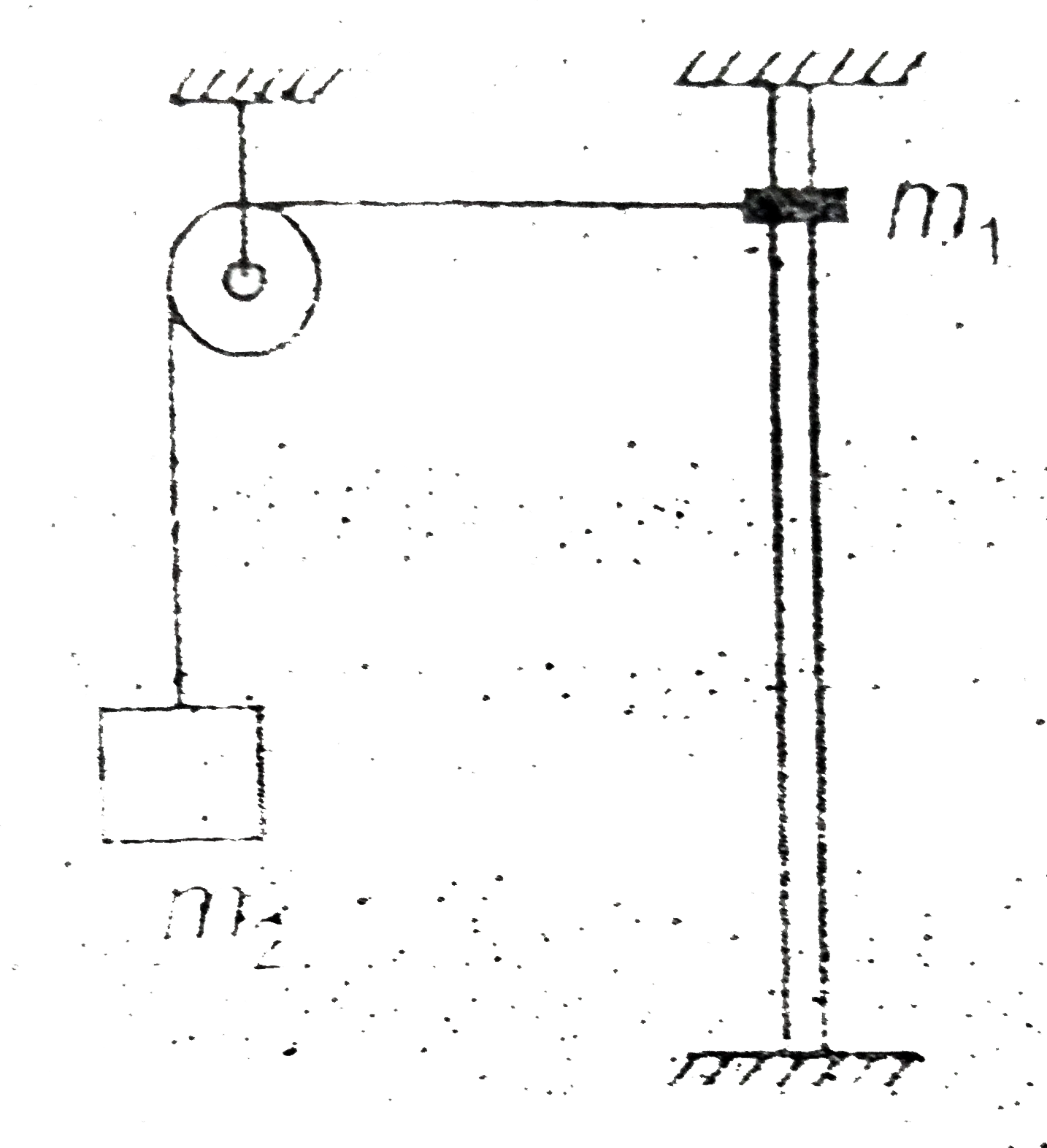 View Solution
View SolutionTwo masses m1 and m2 are connected by light string, which passes over the top of a smooth plane inclined at 30º to the horizontal, so that one mass rests on the plane and the other hangs vertically as shown in fig. It is found that m1, hanging vertically can draw m2 up the full length of the plane in half the time in which m2 hanging vertically draws m1 up. Find m1/m2 . Assume pulley to be smooth-
 View Solution
View SolutionA car C of mass , rests on a plank of mass . The plank rests on a smooth floor. The string and pulley are ideal. If the car starts and moves towards the pulley with certain acceleration, choose the incorrect option:
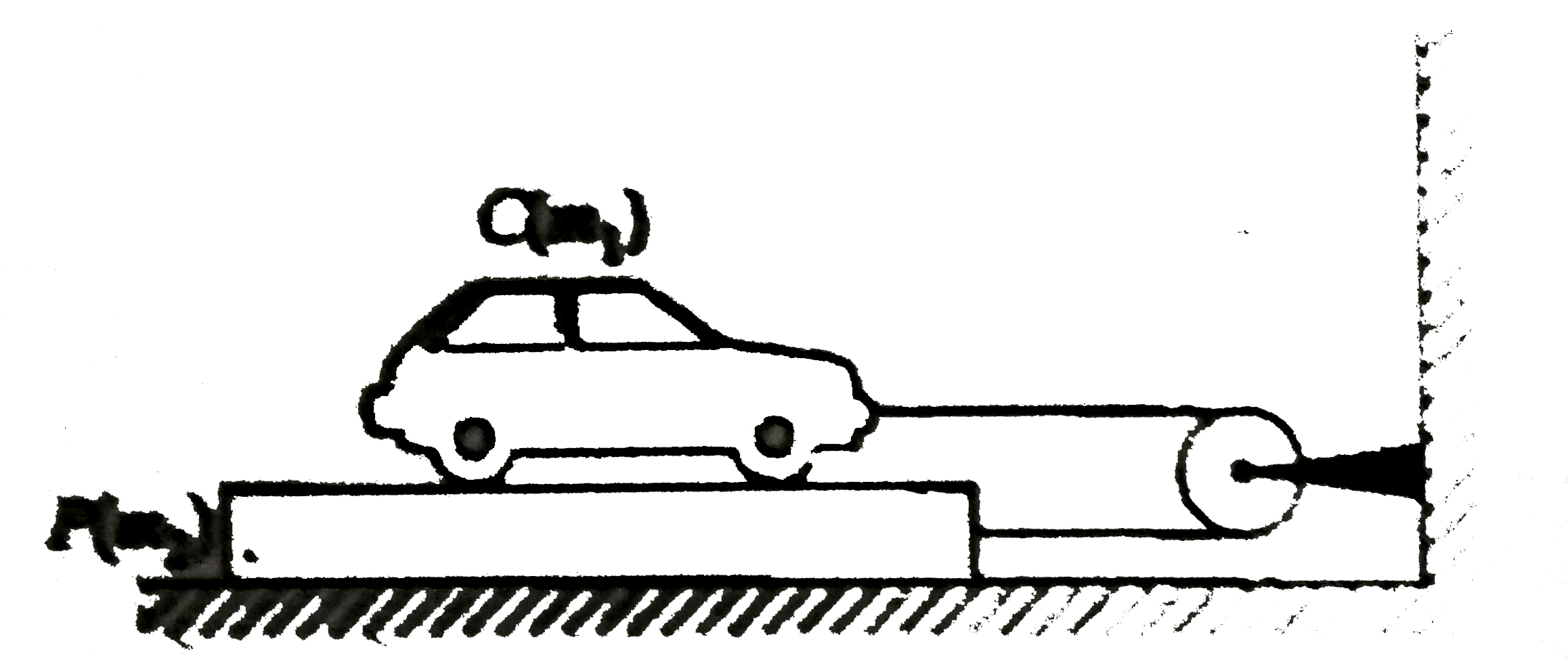 View Solution
View SolutionA car of mass rests on a plank P of mass . The plank rests on a smooth floor. The string and pulley are ideal. The car starts and moves towards the pulley with acceleration.
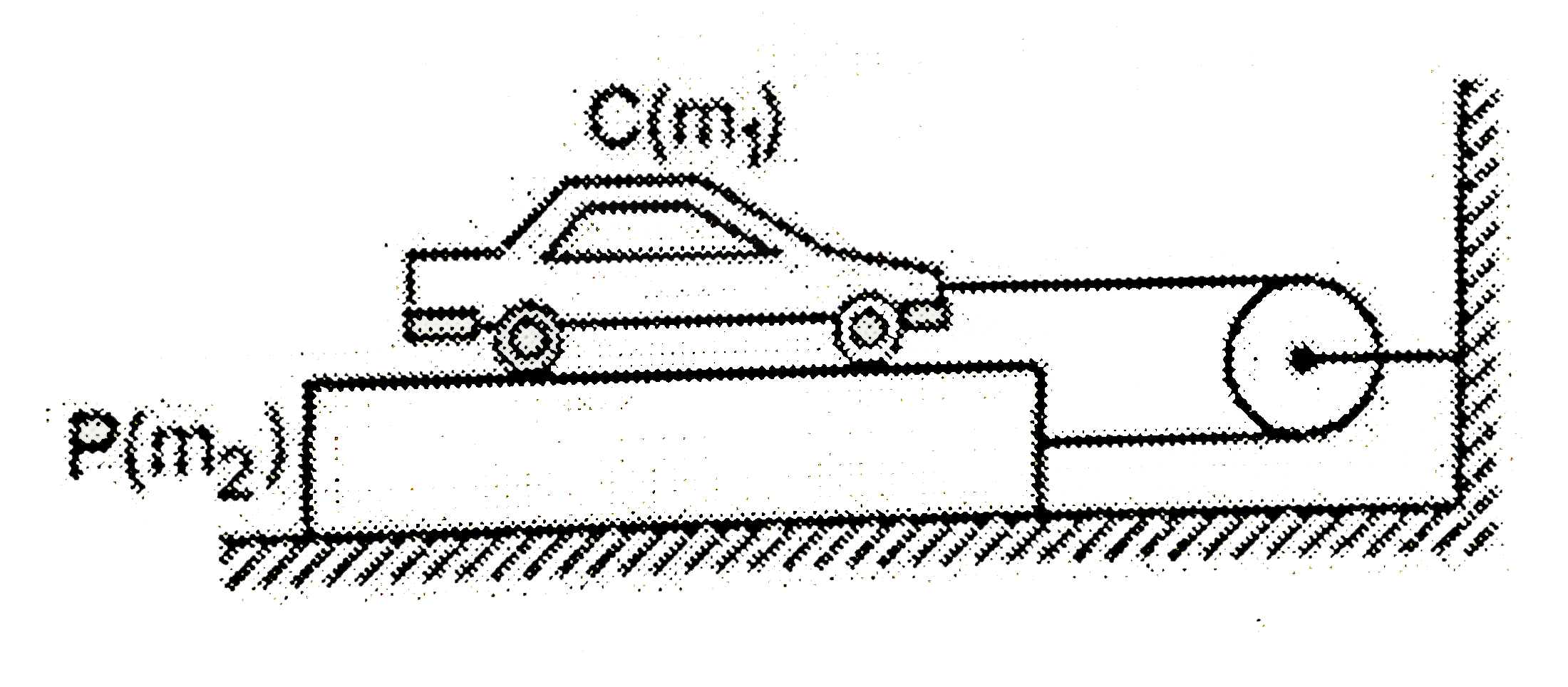 View Solution
View SolutionDiscuss different cases, to find final velocities for two bodies in the below expression for v_(1f)=((m1-m2)v1i)/(m1+m2) and v_(2f)=(2m1v1i)/(m1+m2)
View SolutionIn the figure shown, when the persons A and B exchange their positions, then (m2>m1) the plank moves towards_________
View Solutionf(x)=|x-1|+|x-2|,g(x)=x+(1)/(x),x>0* if m 1=min(f(x)) and m2=min(g(x)) then (m2+m1)/(m2-m1) is equal to
View SolutionA partical of mass m1 is travelling with avelocity u1 strikes head-on against partical of mass m2 at rest.After collision the particales move with a velocity v1 and v2 respectively .show that the ratio of decrese in K.E of the partical of mass m1 to its original K.E is given By (4m1m2)/(m1+m2)^2
View SolutionTwo masses m1 and m2 are suspended together by a massless spring of constant k. When the masses are in equilibrium, m1 is removed without disturbing the system. The amplitude of oscillations is
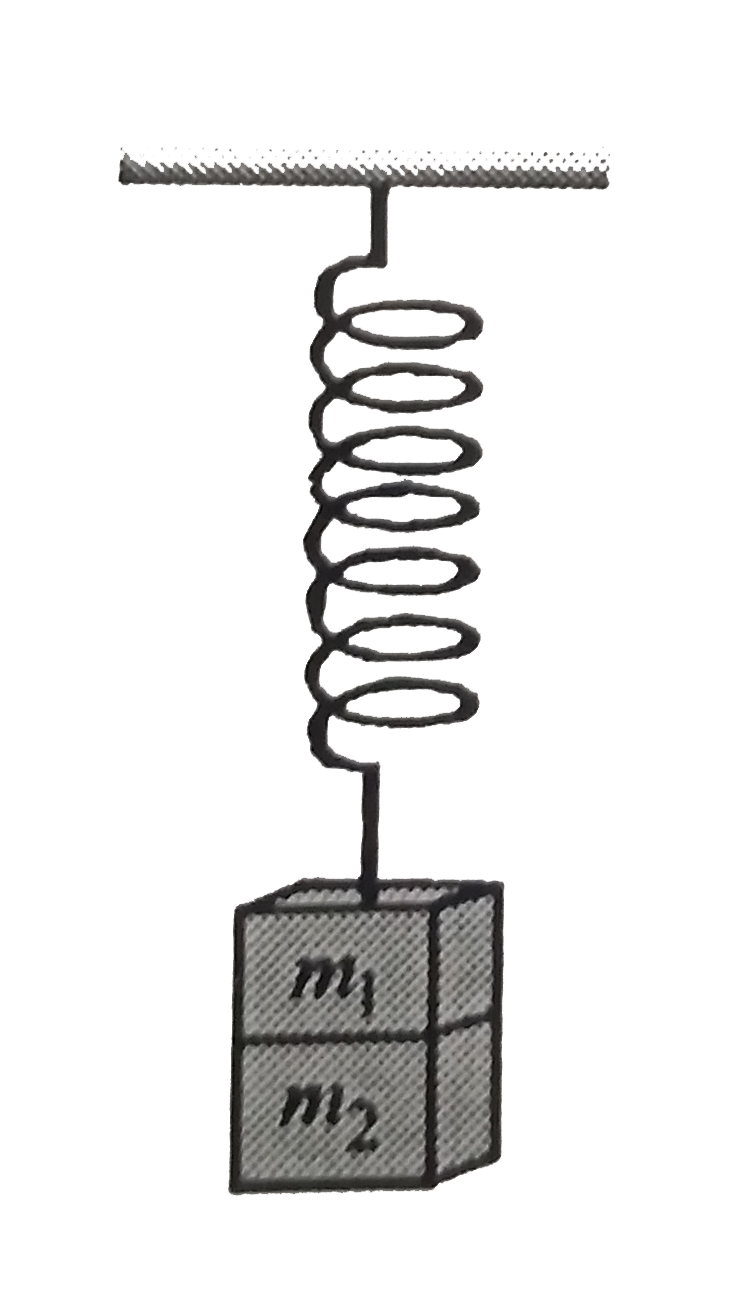 View Solution
View SolutionTwo masses m1 and m2 are suspended together by a massless spring of constant k. When the masses are in equilibrium, m1 is removed without disturbing the system. The amplitude of oscillations is
 View Solution
View Solution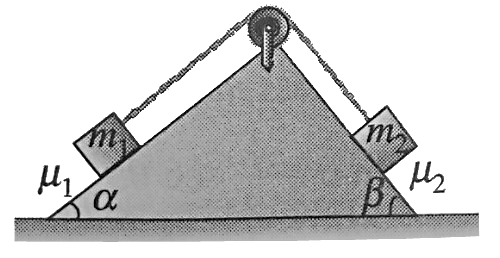
Two blocks of masses and connected by a string are placed gently over a fixed inclined plane, such that the tension in the connecting string is initially zero. The coefficient of friction between and inclined plane is , between and the inclined plane is . The tension in the string shall continue to remain zero ifView SolutionTwo masses m1 and m2 are connected with a string passing over a frictionless pulley fixed at the corner of the table as shown in the figure. The coefficient of static friction of mass m1 with the table is Calculate the minimum mass m3 that may be placed on m1to prevent it from sliding. Check if m1=15 kg,
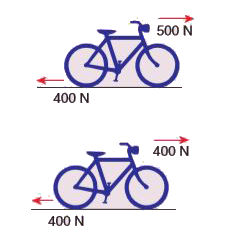 View Solution
View SolutionTwo masses m1 and m2 are connected with a string passing over a frictionless pulley fixed at the corner of the table as shown in the figure. The coefficient of static friction of mass m1 with the table is Calculate the minimum mass m3 that may be placed on m1to prevent it from sliding. Check if m1=15 kg,
 View Solution
View SolutionA stationary particle explodes into two particle of masses m1 and m2 and move in opposite directions with velocities v1 and v2.The ratio of their K.E is
View SolutionTwo spherical balls of masses m1 and m2 collide as shown in figure. After collision mass m1 moves with velocity u/3 in a direction perpendicular to original direction. The angle at which mass m2 will move after collision is
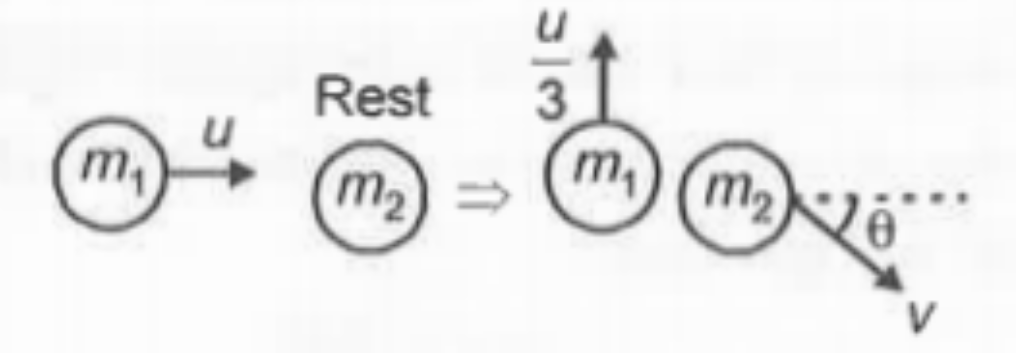 View Solution
View SolutionIf the temperatures of samples of the same material with masses of m1 and m2 are T1 and T2, respectively, then the resulting temperature of the mixture
View SolutionDefine gravitational potential energy and derive an expression for it associated with two particles of masses m1 and m2.
View SolutionThe system is in equilibrium and at rest. Now mass m1 is removed from m2 . Find the time period and amplitude of resultant motion. (Given : spring constant is K.)
View SolutionWhat is the maximum value of force, so that both the blocks will move together ? m1=m2=2kg ,μ=1/3
 View Solution
View SolutionA smooth massless string passes over a smooth fixed pulley. Two masses m1 and m_(2) (m_(1) gt m_(2)) are tied at the two ends of the string. The masses are allowed to move under gravity starting from rest. The total external force acting on the two masses is
View Solution
